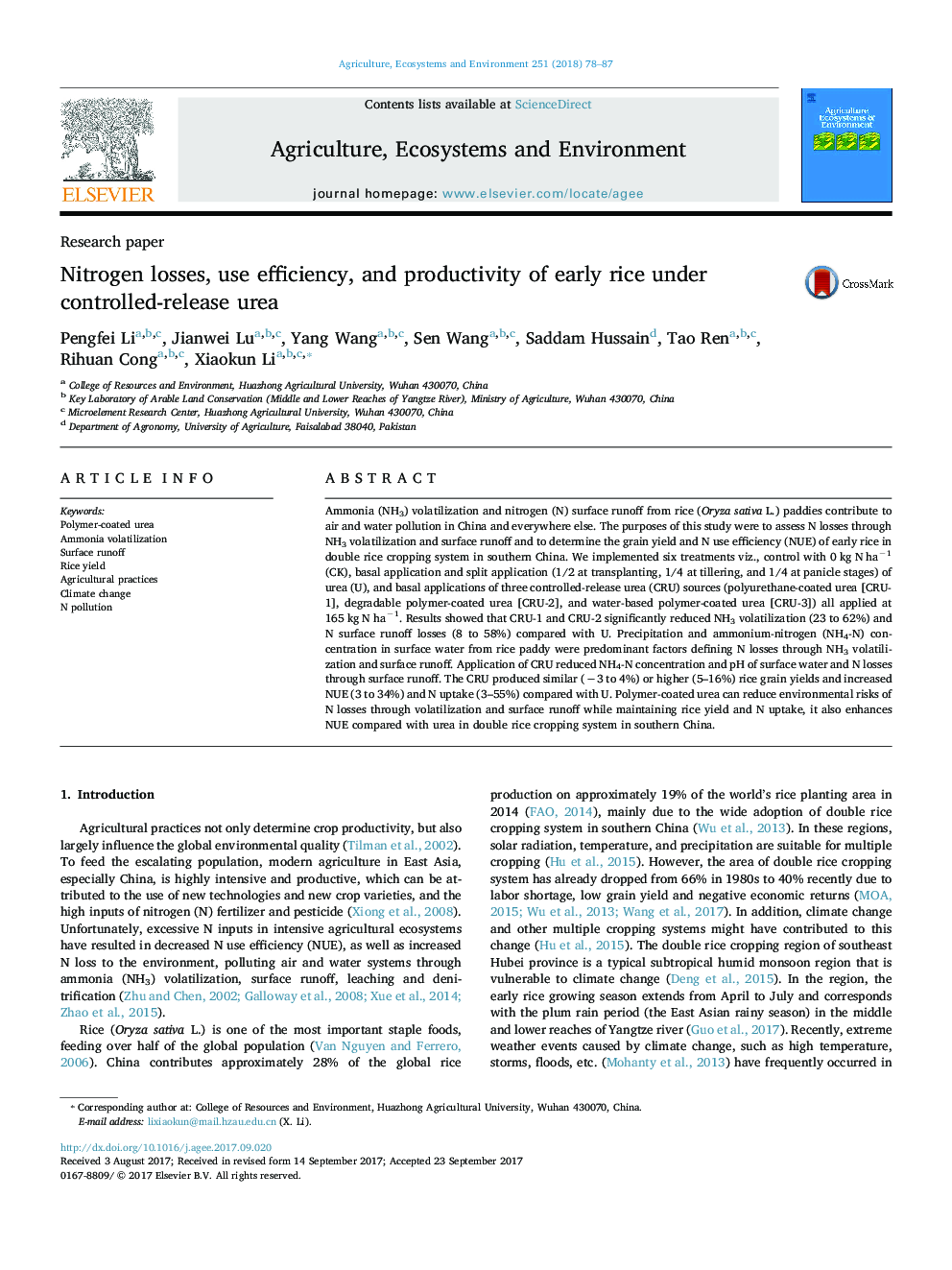| Article ID | Journal | Published Year | Pages | File Type |
|---|---|---|---|---|
| 5537776 | Agriculture, Ecosystems & Environment | 2018 | 10 Pages |
Abstract
Ammonia (NH3) volatilization and nitrogen (N) surface runoff from rice (Oryza sativa L.) paddies contribute to air and water pollution in China and everywhere else. The purposes of this study were to assess N losses through NH3 volatilization and surface runoff and to determine the grain yield and N use efficiency (NUE) of early rice in double rice cropping system in southern China. We implemented six treatments viz., control with 0 kg N haâ1 (CK), basal application and split application (1/2 at transplanting, 1/4 at tillering, and 1/4 at panicle stages) of urea (U), and basal applications of three controlled-release urea (CRU) sources (polyurethane-coated urea [CRU-1], degradable polymer-coated urea [CRU-2], and water-based polymer-coated urea [CRU-3]) all applied at 165 kg N haâ1. Results showed that CRU-1 and CRU-2 significantly reduced NH3 volatilization (23 to 62%) and N surface runoff losses (8 to 58%) compared with U. Precipitation and ammonium-nitrogen (NH4-N) concentration in surface water from rice paddy were predominant factors defining N losses through NH3 volatilization and surface runoff. Application of CRU reduced NH4-N concentration and pH of surface water and N losses through surface runoff. The CRU produced similar (â3 to 4%) or higher (5-16%) rice grain yields and increased NUE (3 to 34%) and N uptake (3-55%) compared with U. Polymer-coated urea can reduce environmental risks of N losses through volatilization and surface runoff while maintaining rice yield and N uptake, it also enhances NUE compared with urea in double rice cropping system in southern China.
Keywords
Related Topics
Life Sciences
Agricultural and Biological Sciences
Agronomy and Crop Science
Authors
Pengfei Li, Jianwei Lu, Yang Wang, Sen Wang, Saddam Hussain, Tao Ren, Rihuan Cong, Xiaokun Li,
